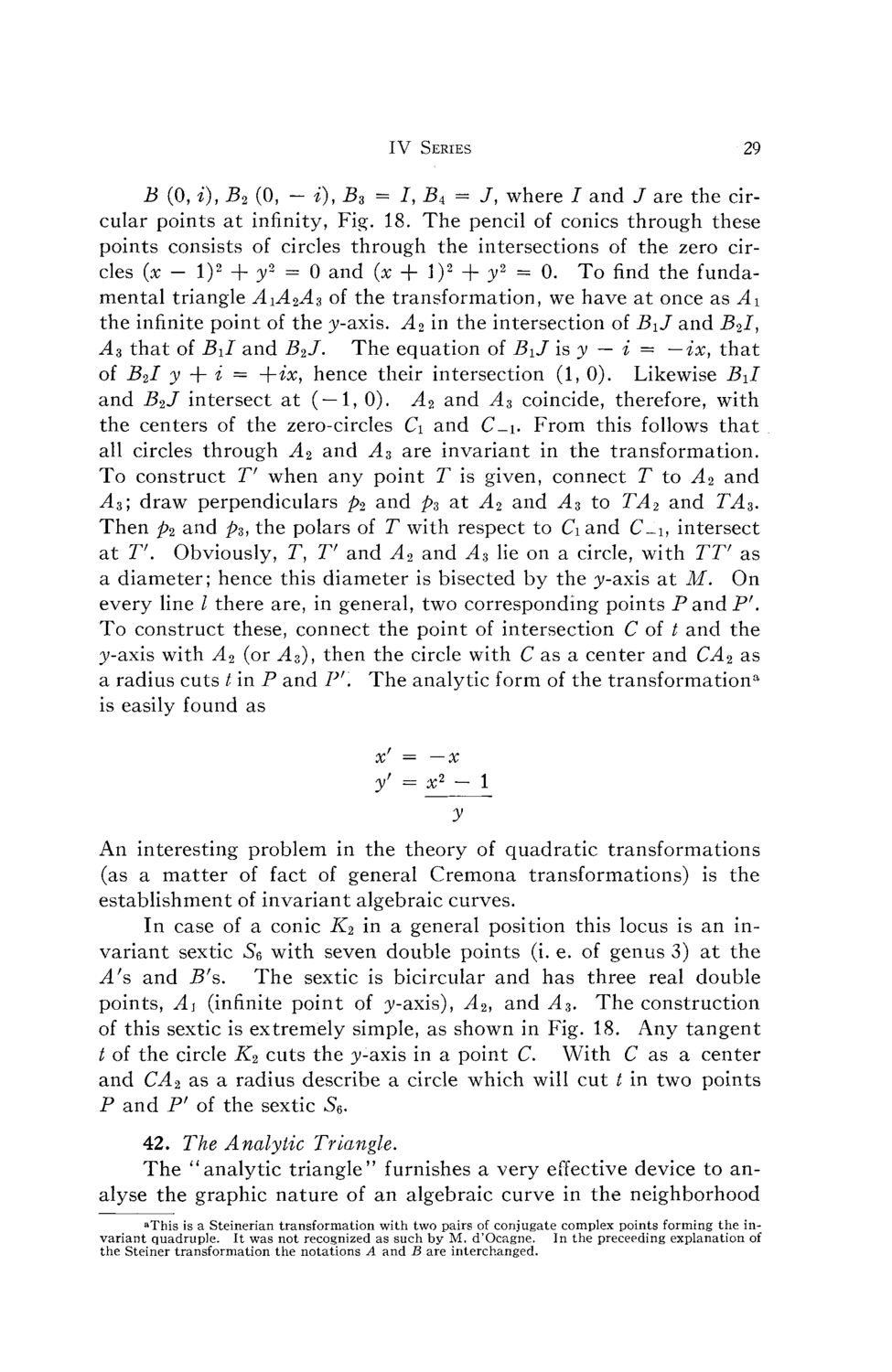| |
| |
Caption: Mathematical Models by Arnold Emch - Series 4 (1928)
This is a reduced-resolution page image for fast online browsing.

EXTRACTED TEXT FROM PAGE:
IV Series 29 B (0, i), B2 (0, — i), Bs = /, BA = /, where / and / are the circular points at infinity, Fig. 18. The pencil of conies through these points consists of circles through the intersections of the zero circles (x — l)2 + y2 = 0 and (x + I)2 + y2 = 0. T o find the fundamental triangle AiA2A3 of the transformation, we have at once as Ai the infinite point of the y-axis. A2 in the intersection of BiJ and B2I, Az that of Bil and B2J. The equation of BiJ is y — i = — ix, that of B2I y + i = +ix} hence their intersection (1, 0). Likewise B\I and B2J intersect at ( — 1, 0). A2 and A% coincide, therefore, with the centers of the zero-circles G and C_i. From this follows that all circles through A2 and As are invariant in the transformation. T o construct T' when any point T is given, connect T to A2 and As; draw perpendiculars p2 and pz at A2 and As to TA2 and TA%. Then p2 and £3, the polars of T with respect to G and C_i, intersect at T\ Obviously, T, T' and A2 and ^43 l e on a circle, with rrr as i a diameter; hence this diameter is bisected by the 3>-axis at M . O n every line / there are, in general, two corresponding points PandP'. T o construct these, connect the point of intersection C of t and the 3>-axis with A2 (or Az), then the circle with C as a center and CA2 as a radius cuts t in P and P;. The analytic form of the transformation is easily found as y' = x2 - 1 y A n interesting problem in the theory of quadratic transformations (as a matter of fact of general Cremona transformations) is the establishment of invariant algebraic curves. In case of a conic K2 in a general position this locus is an invariant sextic Sq with seven double points (i. e. of genus 3) at the A's and B's. The sextic is bicircular and has three real double points, A\ (infinite point of ;y-axis), A2, and As. The construction of this sextic is extremely simple, as shown in Fig. 18. Any tangent t of the circle K2 cuts the ;y-axis in a point C. With C as a center and CA2 as a radius describe a circle which will cut / in two points P and Pf of the sextic S&. 42. The Analytic Triangle. T h e " a n a l y t i c triangle" furnishes a v e r y effective d e v i c e to a n alyse t h e g r a p h i c n a t u r e of a n algebraic c u r v e in t h e n e i g h b o r h o o d aThis is a Steinerian transformation with two pairs of conjugate complex points forming the invariant quadruple. It was not recognized as such by M. d'Ocagne. In the preceeding explanation of the Steiner transformation the notations A and B are interchanged.
| |